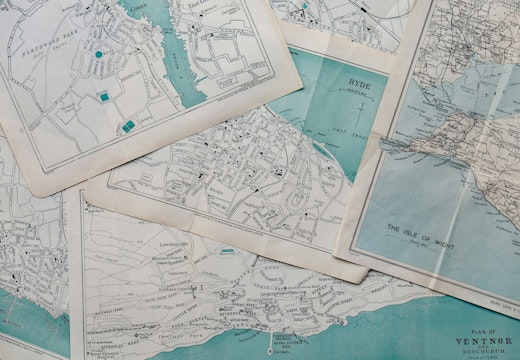All together now: how we experience different sensory inputs at work
Workplace designers should stop thinking about specific sensory inputs in isolation and start planning for a more interconnected approach, according to the latest scientific research in the field
We tend to talk about aspects of design one at a time—lighting, acoustics, colour, air quality, and so on. However, most of us experience multiple environmental factors at the same time and all the sensations we’re pulling into our brains are merging there, which results in a single, coordinated response to the world around us.
New research by Stephen Pierzchajlo of Stockholm University and colleagues (in press) explains how much our interpretation of smells is affected by what else we’re sensing simultaneously. As the research team reports, they ‘tested the hypothesis that olfaction, the sense of smell, would be highly dependent on (non-olfactory) object-predictive cues’ and found ‘olfaction is characterised by a strong dependency on predictive (non-olfactory) cues.’
In other words, what we think something smells like is powerfully influenced by information we pull in from other senses.
Combining the senses
What else have neuroscientists learned about how we combine information from different senses?
Forster (2011) makes the link between our sensory experiences ‘official’ and confirms that they combine in our heads to produce a single response to a place or object. He concludes that his projects ‘suggest that events experienced in one sensory modality can systematically affect perception in a different one.’
Similarly, Schifferstein and Spence (2008) report that ‘Examples show that people’s perceptions of the attributes of a product in a given sensory modality are frequently affected by the sensations that are simultaneously perceived in another modality.’ Schifferstein and Desmet (2008) found that incoming sensory data is first consolidated at the sensory channel level (all information about scents is combined) before information gathered through all sensory channels is combined into a single, overarching experience which generates a particular response from us.
Schreuder, van Erp, Toet and Kallen (2016) conducted a literature review and determined that ‘The brain integrates multisensory stimuli from the environment to reduce perceptual ambiguity, improve perceptual performance, judge more precisely, and enhance the detection of stimuli. . . vision can influence what we hear, touch, and smell, and vice versa. . . Internal responses to an environment are not simply dominated by either one or the other sensory modality but are rather context and activity (shopping, relaxing, dining) dependent.’
Interactions are abundant
Spence (2020a) reports that ‘it is only by recognising the fundamentally multisensory nature of perception that one can really hope to explain a number of surprising crossmodal environmental or atmospheric interactions, such as between lighting colour and thermal comfort and between sound and the perceived safety of public space.’
Sathian and Lacey (2022) share that ‘The sensory systems responsible for touch, vision and hearing have traditionally been regarded as mostly separate. Contrary to this dogma, recent work has shown that interactions between the senses are robust and abundant . . .Touch and hearing both rely in part on temporal-frequency information, which leads to a number of audiotactile interactions reflecting a good deal of perceptual and neural overlap. The focus in sensory neuroscience and psychophysics is now on characterising the multisensory interactions that lead to humans’ panoply of perceptual experiences.’
‘Cross-modal links between temperature and colour are captured by the phrase “red hot”…’
Spence (2020b) shares that ‘The empirical research not only supports the existence of robust cross-modal correspondences between temperature and colour (as captured by everyday phrases such as ‘red hot’) but also between temperature and auditory pitch. Importantly, such correspondences have (on occasion) been shown to influence everything from our thermal comfort in coloured environments through to our response to the thermal and chemical warmth associated with stimulation of the chemical senses, as when eating, drinking, and sniffing olfactory stimuli.’
An example: work by Mehta and colleagues (2012) verifies that seeing warm colours makes people feel warmer, while cool colours have the reverse effect. Fastl (2004) determined, for example, that ‘the colour of the visual stimulus can influence loudness evaluation in such a way that – for same acoustic stimulus – the loudness of a red train can be rated 15 per cent higher than the loudness of a green train.’
Senses are connected
Sensory experiences we find positive can have a ‘halo’ effect, according to Knoeferle, Sprott and Herrmann (2012). Jansson-Boyf (2017) found that ‘visual input generally dominates human perception’ although other senses can at times dominate our perception: ‘different senses (vision, touch, smell, hearing, and taste) all independently make valid contributions to consumer perception. . . our senses are very much connected and that one often affects the others.’
In workplace specific research, Aristizabal and colleagues’ (2021) found that biophilic stimuli received through different senses can be more impactful when combined than alone: participants in their study (which took place in a simulated open office environment) were exposed to three biophilic design interventions (visual, auditory and a multisensory combination) and a baseline condition, with weekly variations over eight weeks. Cognitive performance improved in all biophilic conditions compared to the baseline condition.
Read more of the latest research insights from Sally Augustin in Research Roundup, her regular column in the Innovation Zone for WORKTECH Academy members and partners here.
Research sources
Sara Aristizabal, Kunjoon Byun, Paige Porter, Nicholas Clements, Carolina Campanella, Linhao Li, Aidan Mullan, Shaun Ly, Araliya Senerat, Ivan Nenadic, William Browning, Vivian Loftness, and Brent Bauer. 2021. ‘Biophilic Office Design: Exploring the Impact of a Multisensory Approach on Human Well-Being.’ Journal of Environmental Psychology, vol. 77, 101682.
Hugo Fastl. 2004. ‘Audio-Visual Interactions in Loudness Evaluation.’ ICA 2004, Kyoto, International Commission on Acoustics. Proceedings of the 18thInternational Congress on Acoustics pp. 1161-1166.
Jens Forster. 2011 ‘Local and Global Cross-Modal Influences Between Vision and Hearing, Tasting, Smelling, or Touching.’ Journal of Experimental Psychology: General, vol. 140, no. 3, pp. 364-389.
Cathrine Jansson-Boyf. 2017. ‘Perception and Consumption: Touch, Multisensory Integration and Congruency.’ In C. V. Jansson-Boyd & M. J. Zawisza (Eds.), Routledge international handbooks. Routledge international handbook of consumer psychology. Routledge/Taylor & Francis Group; New York, pp. 85-101.
Klemens Knoeferle, David Sprott, and Andreas Herrmann. 2012. ‘Cross-Modal Influences of Acoustic Product Cues on Taste Perceptions.’ Proceedings, Annual Winter Conference, Society for Consumer Psychology, February 16-18, Las Vegas, pp. 313-314.
Ravi Mehta, Boyoun Chae, Rui Zhu, and Dilip Soman. 2012. ‘Warm Or Cool Color? Exploring the Effects of Color on Donation Behavior.’ Proceedings, Annual Winter Conference, Society for Consumer Psychology, February 16-18, Las Vegas, pp. 108-109.
Stephen Pierzchajlo, Teodor Jernsather, Lara Fontana, Rita Almeida, and Jonas Olofsson. ‘Olfactory Categorization is Shaped by a Transmodal Cortical Network for Evaluating Perceptual Predictions.’ The Journal of Neuroscience, in press, e1232232024.
Sathian and Simon Lacey. 2022. ‘Cross-Modal Interactions of the Tactile System.’ Current Directions in Psychological Science, vol. 31, no. 5.
Hendrik Schifferstein and Pieter Desmet. 2008. ‘Tools Facilitating Multi-Sensory Product Design.’ The Design Journal, vol. 11, no. 2, pp. 137-158.
Hendrik Schifferstein and Charles Spence. 2008. ‘Multisensory Product Experience.’ In Hendrik Schifferstein and Paul Hekkert (eds.), Product Experience, Elsevier: New York, pp. 133-161.
Eliane Schreuder, Jan van Erp, Alexander Toet, and Victor Kallen. 2016. ‘Emotional Responses to Multisensory Environmental Stimuli: A Conceptual Framework and Literature Review.’ Sage Open, vol. 6, no. 1.
Charles Spence. 2020a. ‘Sense of Place: Architectural Design for the Multisensory Mind.’ Cognitive Research: Principles and Implications, vol. 5, 46.
Charles Spence. 2020b. ‘Temperature-Based Crossmodal Correspondences: Causes and Consequences.’ Multisensory Research, vol. 33, no. 6, pp. 645-682.








